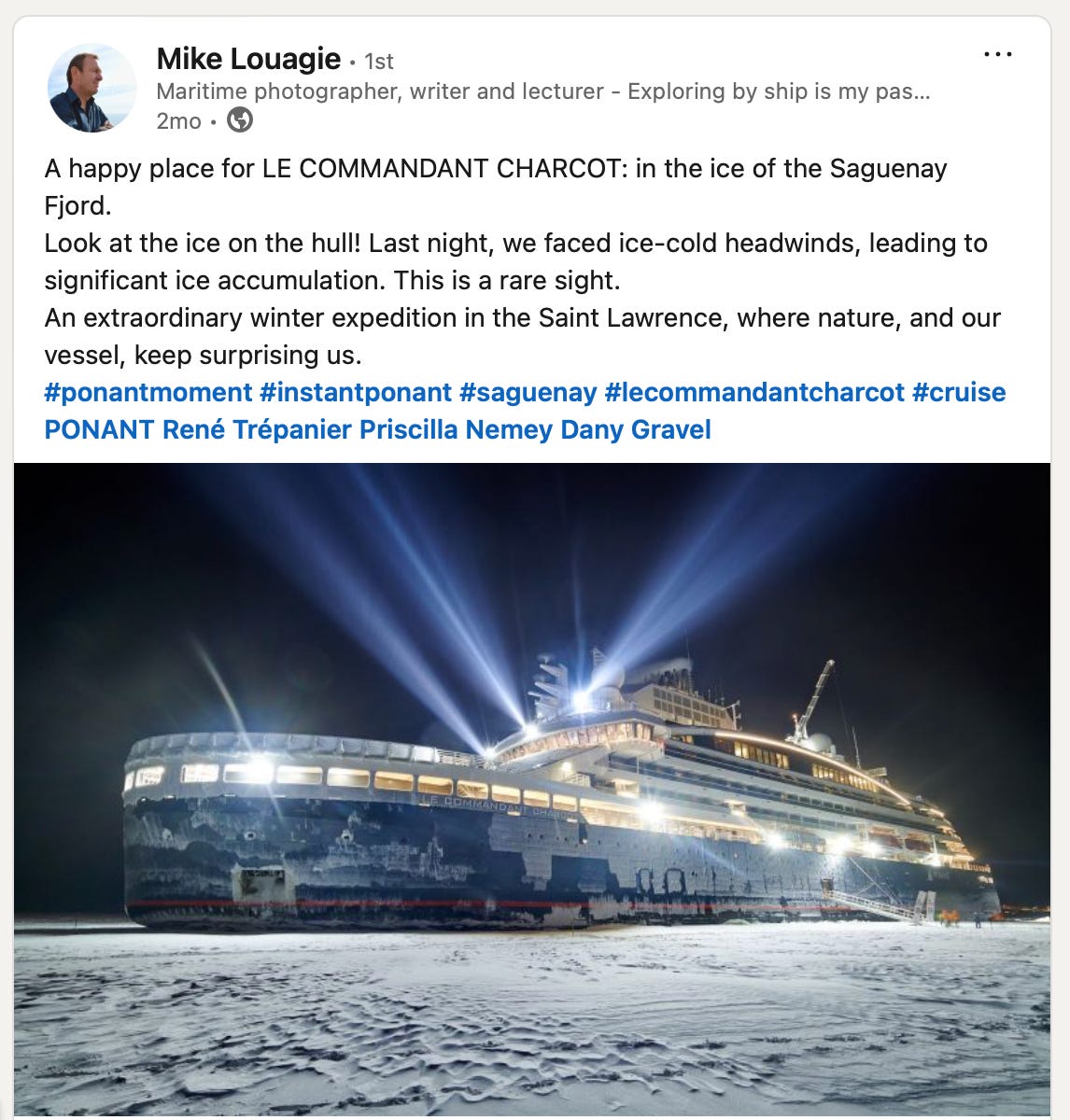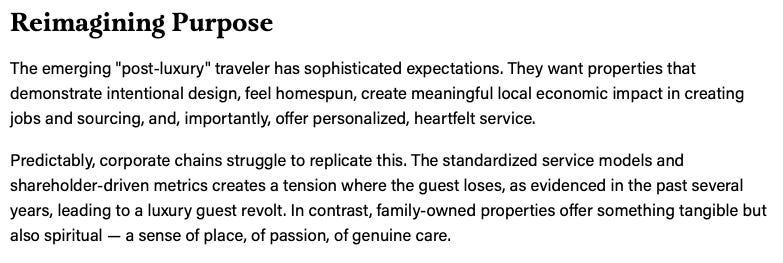It’s been a while 👋.
Every few months, I share some of the most interesting things I read/saw/heard - mostly related to travel and transportation. Hope you like it!
The Stork Club’s wikipedia page is a great read from beginning to end. It was a famous Manhattan nightclub from the 1930s to 60s and hosted politicians, celebrities, gangsters, and journalists who would literally broadcast from the dining room. The club once notoriously took an hour to serve Josephine Baker a steak, prompting accusations of racism. So much happened there. I first heard about The Stork Club from Estee Lauder’s autobiography - her first office was upstairs - and I realized the movie Sweet Smell of Success (worth watching!) is based on a similar club, if not the same one.
The story of the 1998 sinking of the Fantome, a sailing ship operated by Windjammer Barefoot Cruises (now defunct), a scrappy, family-run company with an idiosyncratic founder. The ship vanished during a major hurricane, killing all the crew onboard (passengers had been disembarked a few days earlier). It’s a story of poor decisions, who is responsible for maritime accidents, and how victims are compensated. Compelling and sad.
Before/after photos of Europe’s car-free plazas. I’ve long thought of US cities as hopelessly car-centric and Europe as admirably walking/transit-oriented. That’s generally true today, but in the 20th century Europe was almost as car-brained as the US. Major plazas were parking lots - Lisbon’s as recently as 1997. When activists fought to remove cars, shopkeepers complained about limited park (sound familiar?). Increased tourism and more locals hanging out in a pleasant, car-free environment eventually won them over. Seeing such drastic change gives me optimism that things in US cities could get better too. The instagram account Cars Destroyed Our Cities has many more of these before/after comparisons, including from the US.

Interview with Singers founders on their new hotel in upstate New York. A queer-oriented bar in Brooklyn’s Bed-Stuy neighborhood, Singers opened after the pandemic and quickly became known for its wild events (like “Twinks vs Dolls” and cigarette-smoking races). Last year, they opened a Catskills inn on an 88-acre property. The whole interview is worth reading as a sort of outsider’s take on opening a hotel. The founders are inspired by the Midwest summer camps of their youth and are building something with a similar feeling. I’m also fascinated by a space in the city with strong community and fun events (summer camp for an evening, that also happens to be a bar) building an audience and converting that to longer experiences upstate (summer camp for a weekend).
Colin Nagy’s regular column in Skift is great for clear, original thinking on luxury experiences and branding. My favorite piece so far: this one on family-owned luxury hotels and their increasing advantage vs corporate-owned “luxury” properties…
Speaking of Skift, Rafat Ali’s writing and video dispatches are worth browsing for thoughtful (and sometimes brutally honest) writing. Two favorites were about how tourism flattens food cultures and the “slow fade” (read: death) of consumer travel media. The last one hit particularly hard. I used to obsessively read Conde Naste Traveler and Travel + Leisure. I still subscribe, but they’re shells of what they used to be.
New Yorker profile of Irving V. Link, a man of leisure who spent every day at the Beverly Hills Hotel for 42 years, eating breakfast and tanning by the pool. His streak ended in December 1992 (the profile was published in 1993), when the hotel closed for a thorough renovation. Adam Gopnik’s writing is playful and entertaining, especially if you like institution hotels and the characters they attract.

Photographer Mike Louagie’s photos from icebreaker Commandant Charcot on the first ever winter cruises in the St. Lawrence. He posted these to his LinkedIn - my favorites are one, two, three, four, and five. I also love this video, showing crew hammering away ice so it doesn’t accumulate and weigh down the ship. His photos make Antarctica look warm.








